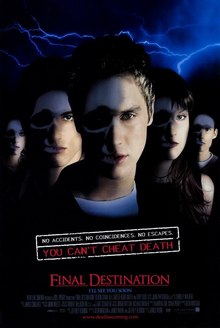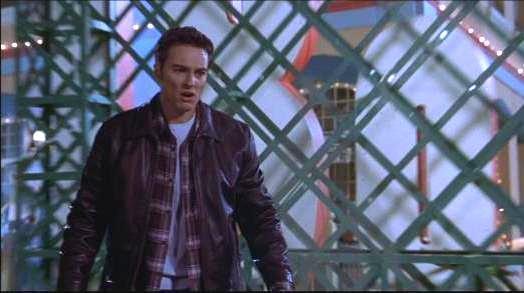Sam Raimi’s The Evil
Dead is one of the few modern horror classics that could use a decent
remake. As much as fans (like
myself) love the film, as much as Raimi’s camera work continues to amaze
audiences, the movie is pretty flawed and ripe for a reinterpretation.
But Evil Dead is
not that movie.
The film starts out with a prolog, as a man is coached on by
a group of hillbillies (who look like rejects from another The Hills Have Eyes film) into burning his Deadite possessed
daughter alive in order to free her soul.
The credits roll and we are introduced to a group of people arriving at
an isolated cabin to help Mia (Jane Levy) kick her drug habit, The group includes Mia’s brother, David (Shiloh Fernandez),
his girlfriend Natalie (Elizabeth Blackmore) and two of Mia’s friends. Olivia (Jessica Lucas) is an RN,
planning to provide medical support to Mia, and Eric (Lou Taylor Pucci), a high
school science teacher and old friend of David as well.
Events start going sour once the group discovers the cabin’s
fruit cellar is full of dead cats and a burned post. At this point, director Fede Alvarez decides the audience is
too stupid to figure out this is the spot where the young woman was burned and
inserts a needless flashback, even though the scene happened less than a half
hour earlier.
The group finds the Book of the Dead and Eric gets to play
the idiot who opens and reads from it, despite the warnings written across its
pages. Mia decides something
creepy is happening and drives away from the cabin, only to meet up with a
rapey patch of thorny vines and is impregnated by the force from the
woods. The others explain away her story, and her wounds, as the
self-inflicted delusions of an addict experiencing DTs. This gives the rainstorm time to flood the
only road to civilization, trapping them in the cabin and allowing the unseen
force try and devour their souls in order to unleash itself upon the rest of
humanity. And, as promised in the
trailer, lots of gory mayhem ensues.
The stupidity of this group, and the script, is almost
forgivable in the beginning. Mia
dumps her drugs down a well, in a ceremony that will ruin the water supply for
everyone, yet no one seems concerned.
Olivia is convinced she can give the same care for Mia as a rehab center,
despite being in the middle of the woods, isolated from any emergency medical
facilities. And one can forgive a
science teacher for reading from the book, without suspecting that the demons
written about would come to life.
And the script never explains why the hillbillies would leave such a
dangerous book in someone’s cabin for others to find, or how the cabin has
electricity without power lines running to it.
But these horror cliches are as forgivable, to a point, as a remake’s nods to the original material. But unlike the best remakes (such as1988’s The Blob), Evil Dead goes nowhere new with those moments. The
scenes exist only to pander to fans of the original, which might have worked had the filmmakers not pulled moments from the two sequels as well as if the scriptwriters (Alvarez and Diablo Cody)
want to include everything that made the series great.
Warning, the next two paragraphs contain some SPOILERS.
It’s a bad idea executed in a horrible fashion. The possessed hand sequence would work
in any film not titled Evil Dead,
but Bruce Campbell’s amazing battle with his own limb in the original sequel makes
the scene fall flat. The fruit
cellar floods, recalling the Pit Bitch moment in Army of Darkness, for no reason other than to include that iconic
scene. And once the sole survivor
shoves their bloody stump into a chainsaw handle, it’s obvious the filmmakers
are simply delivering more of the same, while trying to act fresh for
newcomers. Such a strategy never works, as the fans will be disappointed in the
over wrought winks and nods, while newer audience members won’t get the homage.
Yet the filmmakers decide this wasn't enough and crib bits off
other horror films, in what feels like a desperate attempt to appeal to the fans. Mia becomes the foul
mouthed Regan from The Exorcist in
several scenes, the Deadite possessed bodies move like they are extras from
early 2000’s J-horror films, and the opening shot feels too much like Stanley
Kurbrick’s The Shining to be effective
in showing the cabin’s isolation. This
film is such a paint-by-numbers affair that I was squirming in my seat from
boredom before the film was half over.
On the plus side, the effects look great. Though Alvarez’s claim of not using CGI
seems a bit overblown, as a few of the fire gags look computer enhanced, the
blood and gore is all practical and is amazing work. It’s nice to see a return to old school gore effects, but
fans might wish it served a better film than this one.
By the time the credits finish up, and one of the people involved
with the original gives their seal of approval, I suspect much of the audience
is wondering why anyone would think this remake is so groovy. Rather than trying to be original in any way, Evil Dead is nothing
more than the equivalent of another kitten's photo on the web, asking the
audience to like it without doing anything to earn such admiration other than
appear onscreen.





